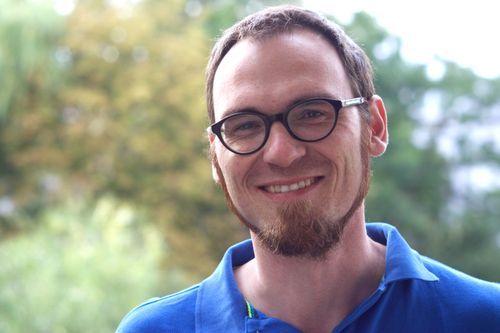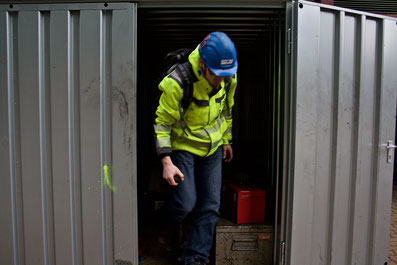
Dr. Jan Schütze is head of the Mercury Emissions Control Department at IEM. He is one of the few experts in the field of mercury removal in power plants. In this interview, he talks about his vision: to reduce the mercury emissions of power plants to a minimum.
Dr. Jan Schütze, head of the Mercury Emissions Control Department at IEM Fördertechnik: The steel scaffolding is in place and the silos are already set up. Currently, a roof is being put on. At the same time, we are already busy with the programming of the system. So, except for small delays, we are working fully within our time frame.
A Simple Explanation: How does this system work?
Essentially with activated carbon, which binds the mercury in transit. First, we put the activated carbon in huge storage tanks for ten to twenty days. In the flue gas channel, the activated carbon presents as dust in the exhaust. Finally, the activated carbon dust reaches an electrostatic filter; there it attaches itself to the mercury.
“We have shown that we can comply with the limits.”
Mercury-free blog: You are building a system by which the lignite power plant in Schkopau can filter mercury from the exhaust. At what stage is the construction at?

Jan Schütze did his doctorate in mercury reduction at power plants. Here he is at work at the Schkopau Power Station.
What happens to the activated carbon after it has attached itself to the mercury?
This dust is then brought to the open pit, in which previously the raw brown coal had been dug out of. There, it is used as a building material similar to cement.
The aim of the system is that the Schkopau Power Station emits an average of less than 10 micrograms of mercury per cubic meter of exhaust. How do you know that you can comply with this limit?
We have already done preliminary tests with a mobile system. In these tests, we showed that we can comply with the limits. The fixed installation will work even better as it can be controlled even more accurately. So, we should keep doing this.
The next stricter limit is likely to be one to seven micrograms per cubic meter of exhaust gas and will likely come into force in the summer of 2021. Will Schkopau be able to comply with this limit?
That depends on how strict this limit will be. It should actually be in black and white in August, but the legislature takes its time. If the limit is actually going to be seven micrograms – at least that’s what is written in the draft of the 13th Federal Emissions Control Ordinance – it could be done with our method. If the limit becomes even more strict, we would need to combine the activated carbon with other processes.
“In den USA hat sich das Problem dramatischer dargestellt als in Deutschland.”
In the US, the limits have been much lower than in Germany for a long time. Many people wonder why that is, of course.
In the US, the problem has presented more dramatically than in Germany. Unlike in Germany, the by-products of lignite burning – such as ash and gypsum – are not utilized in the US. Instead, they largely end up in the landscape. As a result, the mercury gets into groundwater more quickly and therefore, into the environment. Some rivers and areas in the US have much more mercury contamination. Therefore, Germany has to take tougher measures.
Brown coal is considered a particularly dirty form of energy, not only because of the CO2 emissions, but also due to the mercury. How do you assess the environmental impact of lignite compared to other types of energy production?
The cleanest form of energy – if you look at emissions alone – is, of course, nuclear energy. But every form has advantages and disadvantages. One advantage of lignite is that you have it under complete control. Here, the Schkopau Power Plant is located very close to the open pit. There, we also know the mining conditions. Coal, on the other hand, is no longer being mined in Germany, but only imported. This means that the transport costs increase and we do not know what is happening in the mining areas, for example if groundwater is being contaminated. This can also happen in the natural gas production, the so-called fracking. It is therefore difficult to say which energy is the cleanest. You would have to check the entire production chain for that: From the mining site to the outlet.
The aim of the system is that the Schkopau Power Station emits an average of less than 10 micrograms of mercury per cubic meter of exhaust. How do you know that you can comply with this limit?
We have already done preliminary tests with a mobile system. In these tests, we showed that we can comply with the limits. The fixed installation will work even better as it can be controlled even more accurately. So, we should keep doing this.
The next stricter limit is likely to be one to seven micrograms per cubic meter of exhaust gas and will likely come into force in the summer of 2021. Will Schkopau be able to comply with this limit?
That depends on how strict this limit will be. It should actually be in black and white in August, but the legislature takes its time. If the limit is actually going to be seven micrograms – at least that’s what is written in the draft of the 13th Federal Emissions Control Ordinance – it could be done with our method. If the limit becomes even more strict, we would need to combine the activated carbon with other processes.


